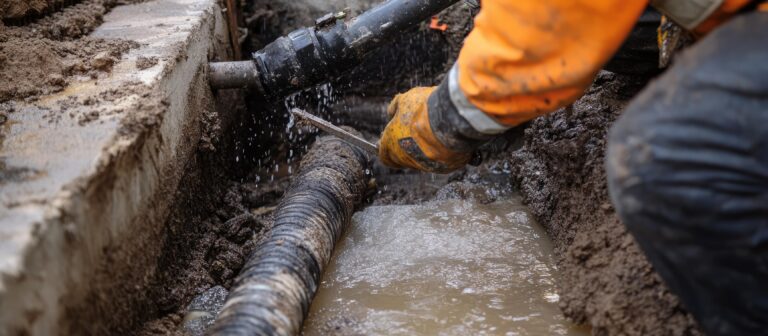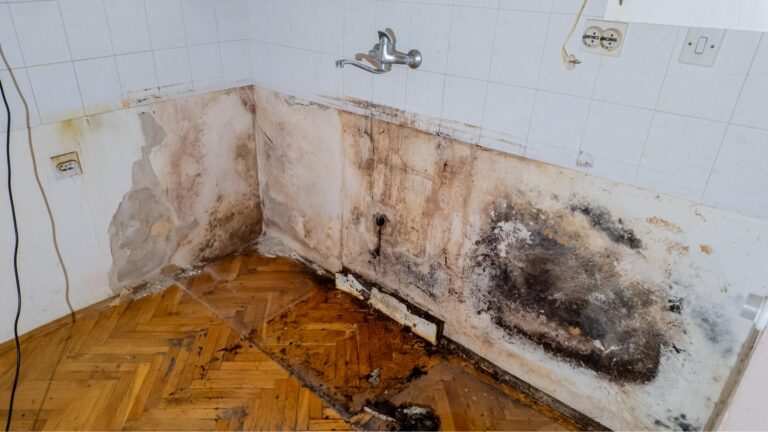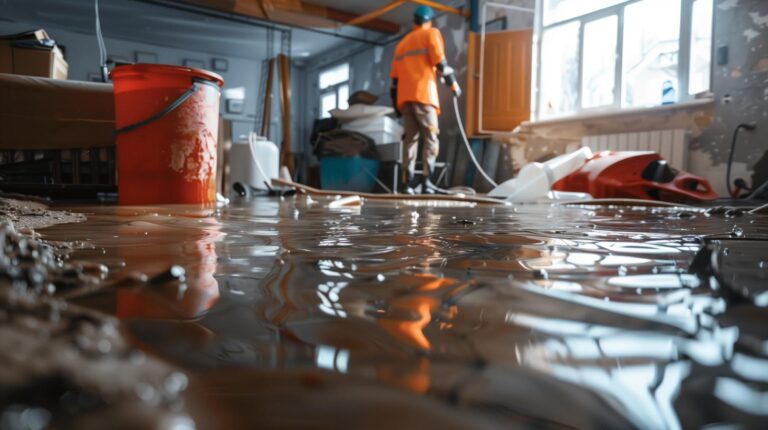
Unlock Secrets to Targeting Restoration Clients
Finding the right clients for your restoration services can feel like searching for a needle in a haystack. But with a strategic approach, you can pinpoint exactly who your ideal clients are and how to reach them effectively. By understanding their needs and utilizing targeted marketing techniques, you’ll be well on your way to connecting with homeowners in urgent situations. So, what are the best strategies to ensure your message resonates?
Key Takeaways
- Analyze the demographics of ideal restoration clients, focusing on age, income, and location to tailor marketing efforts effectively.
- Use keyword research to identify primary and long-tail keywords that resonate with potential clients seeking restoration services.
- Craft compelling ad copy that conveys urgency and incorporates testimonials to build trust and encourage immediate action from clients.
- Implement geotargeting to focus marketing efforts on local homeowners or businesses in need of urgent restoration services.
- Regularly measure campaign effectiveness through conversion rates and CTR to refine strategies and enhance overall marketing performance.
Understanding Your Ideal Restoration Client Profile
When you immerse yourself in understanding your ideal restoration client profile, you’ll discover that clarity is key to effective marketing and service delivery.
Start by analyzing client demographics, such as age, income level, and location. This information helps you tailor your messaging and approach, ensuring it resonates with potential clients.
Next, explore their service preferences. What specific restoration services do they seek? Do they prioritize quick response times, quality workmanship, or competitive pricing? By identifying these preferences, you can create targeted marketing campaigns that address their needs directly.
Engaging directly with your audience through surveys or feedback can further refine your understanding. This strategic approach enhances your service offerings and builds trust and loyalty.
Utilizing Keyword Research for Effective Targeting
To effectively target restoration clients, you need to start with thorough keyword research.
By identifying relevant keywords and analyzing your competitors’ strategies, you can optimize your content to attract the right audience.
This strategic approach boosts your visibility and enhances your chances of converting leads into loyal clients.
Identify Relevant Keywords
Effective keyword research is the cornerstone of successful targeting for restoration clients. Start by identifying the primary keywords related to your services, such as “water damage repair” or “fire restoration.”
Next, explore keyword variations that capture different aspects of search intent, like “emergency water cleanup” or “mold removal services.” This approach ensures you reach potential clients at various stages of their decision-making process.
Use tools like Google Keyword Planner or SEMrush to gauge search volume and competition, helping you prioritize which keywords to target.
Analyze Competitor Strategies
Understanding your competitors’ keyword strategies can provide valuable insights for your own targeting efforts. By analyzing their market positioning, you can identify which keywords resonate with your target audience and understand why they attract clients.
Look for patterns in their content and service differentiation—these elements often highlight what sets them apart and how they communicate value. Utilize tools like SEMrush or Ahrefs to discover the keywords they rank for and assess the competition level.
This research will reveal gaps in your strategy and opportunities for improvement. By strategically incorporating these insights, you’ll be better equipped to refine your own keyword targeting, enhancing your visibility in the restoration industry and driving more clients to your services.
Optimize Content Effectively
While diving into keyword research, you’ll discover that optimizing your content is essential for reaching restoration clients effectively. Start by identifying keywords that resonate with your target audience. Use tools like Google Keyword Planner to pinpoint high-traffic terms related to restoration services.
Once you have your keywords, weave them into your content naturally, enhancing both content engagement and search visibility.
Don’t forget about audience segmentation; tailor your messaging for different client types, whether they’re homeowners, businesses, or insurance companies. This approach boosts relevance and fosters a deeper connection with each segment.
Crafting Compelling Ad Copy for Restoration Services
When crafting ad copy for restoration services, you need to highlight urgency and address your clients’ immediate needs.
People often respond to emotional appeals, so connect with their concerns to motivate them to act quickly.
Highlight Urgency and Needs
In a crisis, every second counts, and your potential clients need to feel that urgency in your ad copy. Highlight their urgent needs by conveying the immediacy of disaster response.
Use powerful language that emphasizes quick action, like “Don’t wait—call us now!” or “We’re here 24/7 to restore your peace of mind.” Make it clear that time is of the essence; a prompt response can prevent further damage.
Incorporate statistics or testimonials that underline the importance of immediate help. By focusing on their distress and the urgency of your services, you position yourself as the solution.
Use Emotional Appeal
Emotional appeal can truly resonate with your audience, making them feel understood and supported during their time of need.
To craft compelling ad copy for your restoration services, focus on these strategies:
Emotional Storytelling: Share relatable stories that evoke feelings of hope and resilience, illustrating how your services can change lives.
Client Testimonials: Use authentic testimonials to showcase real experiences, helping potential clients see the positive impact your work has had on others.
Empathy in Messaging: Acknowledge the difficulties your audience faces and offer reassurance that they’re not alone in their struggles.
Leveraging Geotargeting to Reach Local Clients
Geotargeting is a game-changer for reaching local clients effectively. By utilizing geotargeting tools, you can tailor your marketing efforts to specific local demographics, ensuring your message hits home.
Think about how location-based ads can direct your services to those who need them most, whether it’s a homeowner facing water damage or a business needing urgent restoration.
Moreover, embracing community engagement is essential. You can foster trust and rapport by participating in local events or sponsoring neighborhood initiatives, making your brand a familiar name in the area.
With precise targeting, you won’t waste resources on audiences outside your service area. Instead, you’ll effectively connect with potential clients who are ready to act.
Implementing Negative Keywords to Optimize Ad Spend
To maximize your ad spend effectively, implementing negative keywords is essential. By excluding irrelevant search terms, you’ll ensure your ads reach potential restoration clients while minimizing wasted budget.
Here’s how to get started:
Conduct Negative Keyword Research: Identify terms that don’t align with your services. For instance, avoid keywords like “DIY” or “cheap” if you offer premium restoration services.
Analyze Ad Spend: Regularly review your ad performance to pinpoint areas where your budget might be misallocated. Use this data to refine your negative keyword list continually.
Test and Adjust: Monitor your ads closely after implementing negative keywords. Be prepared to make adjustments based on how they impact your overall performance.
Analyzing Competitor Strategies in Restoration Marketing
While you focus on improving your restoration marketing efforts, analyzing competitor strategies can provide valuable insights that enhance your approach.
Start with a solid competitor analysis to identify what your rivals are doing well and where they falter. Look at their advertising channels, messaging, and customer engagement tactics. This strategy evaluation will help you pinpoint gaps in your own marketing efforts.
Consider their online presence—what keywords are they targeting? Are they leveraging social media effectively? By understanding their strengths and weaknesses, you can develop a unique selling proposition that stands out in the crowded restoration market.
Don’t forget to monitor their customer reviews and feedback; these can reveal pain points you can address in your services.
Ultimately, by learning from your competitors, you’ll refine your strategies, attract more clients, and stay ahead of the competition.
Measuring Success: Key Metrics for Google Ads Campaigns
Understanding your competitors’ strategies sets a strong foundation, but measuring the effectiveness of your own marketing efforts is just as important.
To optimize your Google Ads campaigns, focus on these key metrics:
Conversion Rates: Track how many visitors take desired actions, like filling out a form or calling your business. Higher conversion rates indicate your ads resonate with potential clients.
Click-Through Rate (CTR): This metric shows the percentage of users who click on your ad after seeing it. A higher CTR suggests your ad copy and targeting are effective.
Campaign Analytics: Explore your campaign data to understand which keywords and ads perform best. Regularly analyzing this information helps you refine your strategy for better results.
Recap
By mastering these strategies, you’ll become a restoration marketing wizard, turning potential clients into loyal customers in no time! With the perfect blend of targeted keywords, engaging ad copy, and savvy geotargeting, you’ll be reaching homeowners in distress faster than a superhero can save the day. Don’t forget to analyze your efforts—it’s like having a crystal ball for your business’s success! So, step up your game and watch your restoration client base skyrocket to heights you never thought possible!


